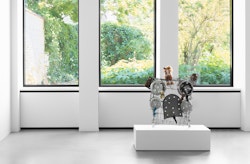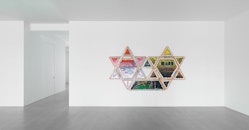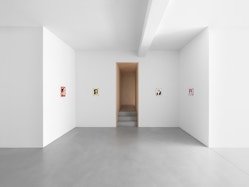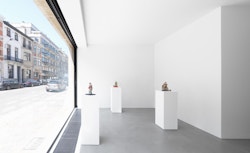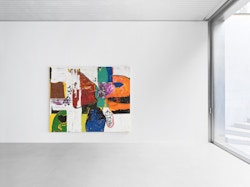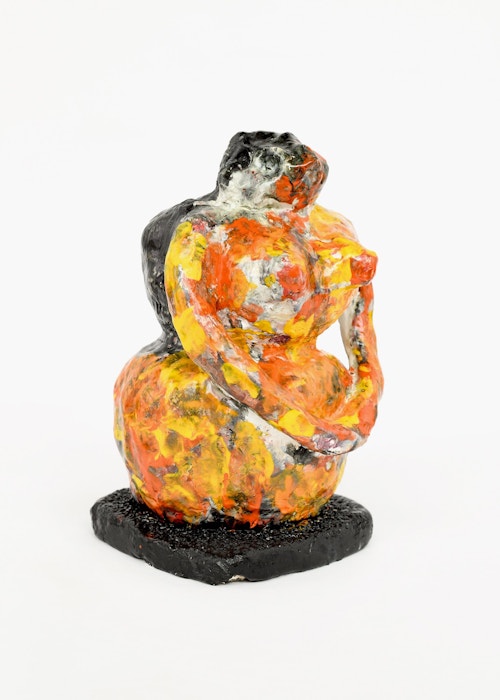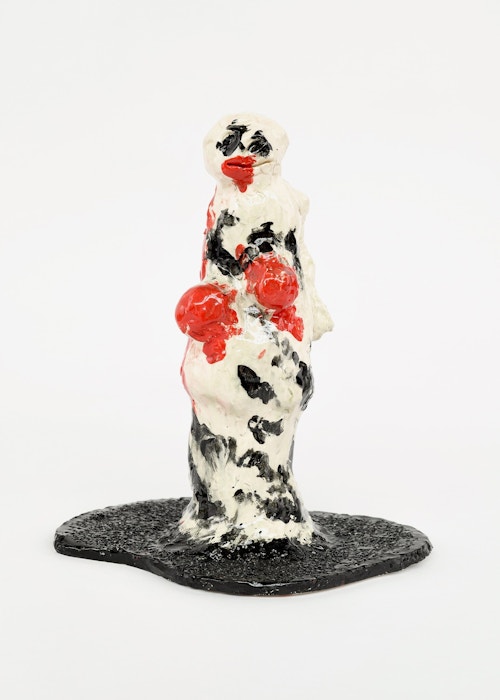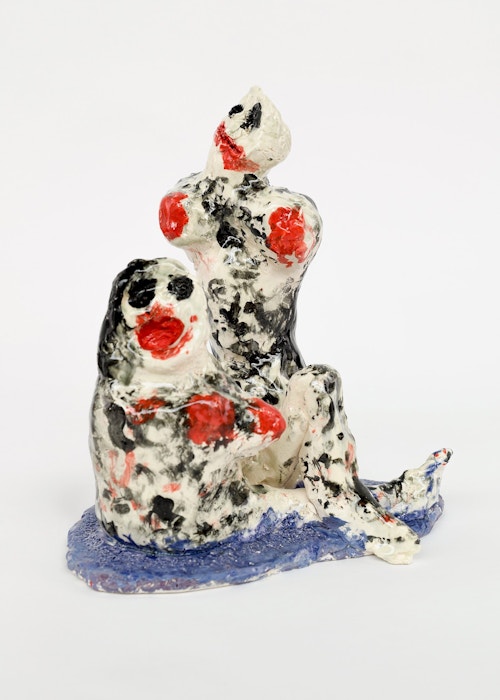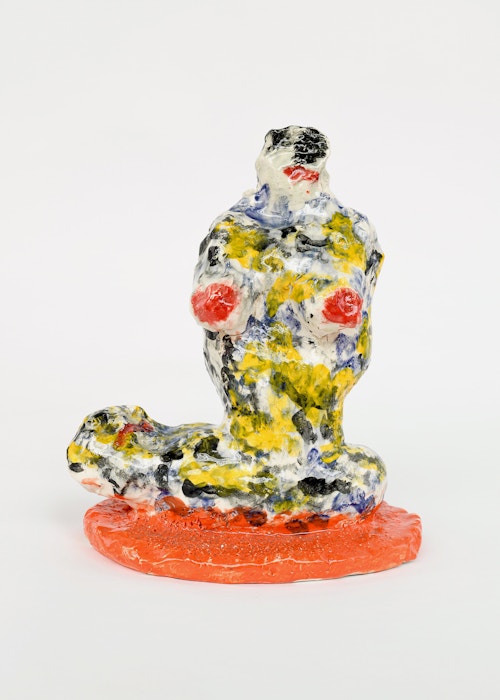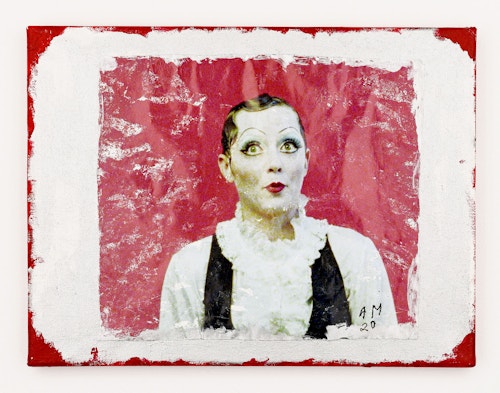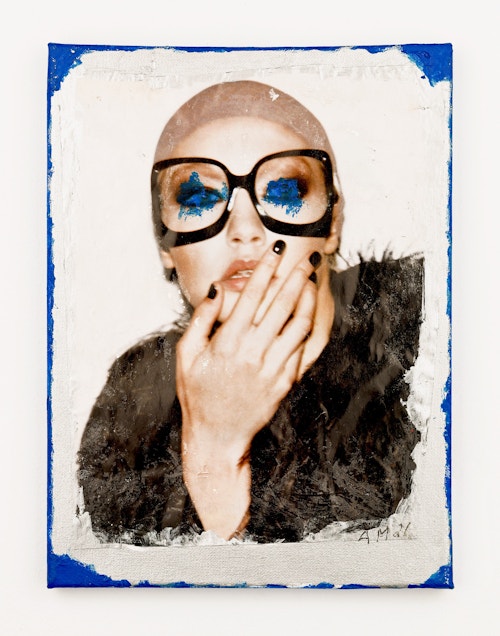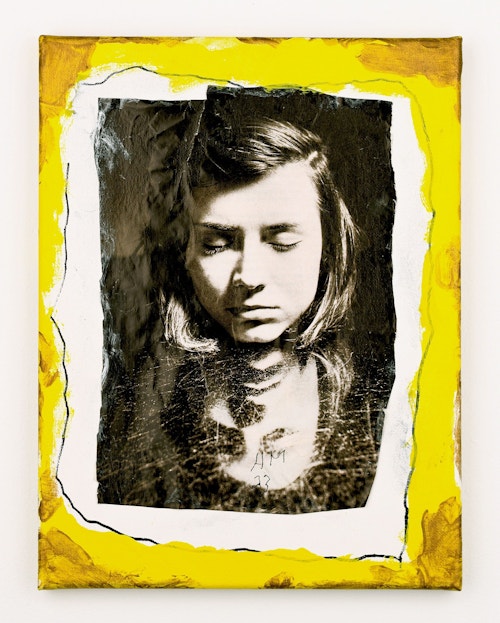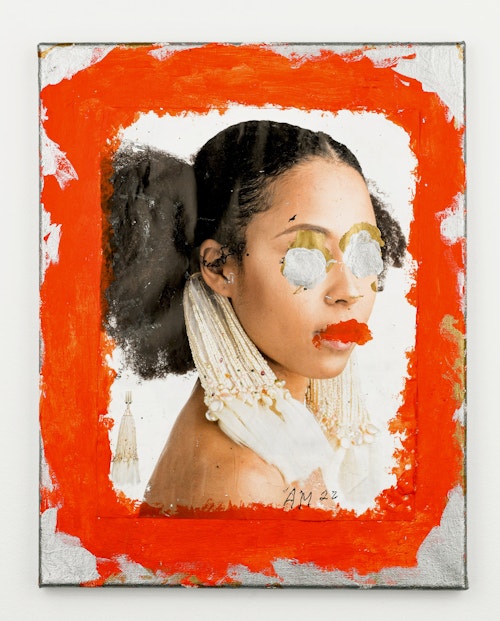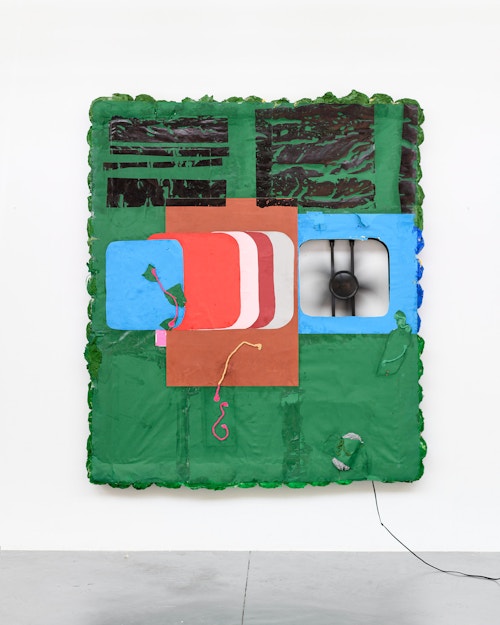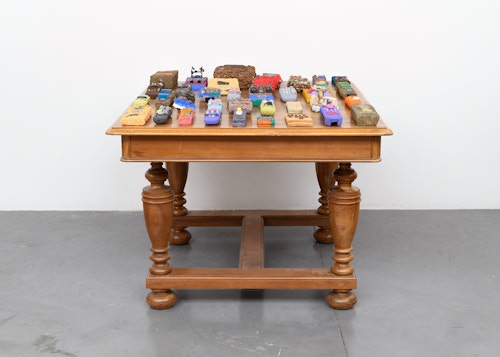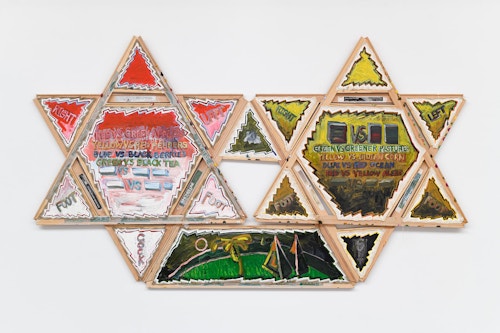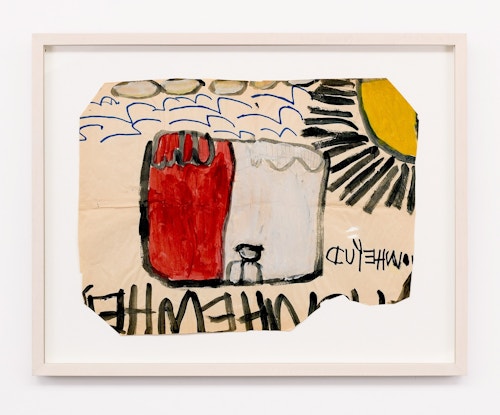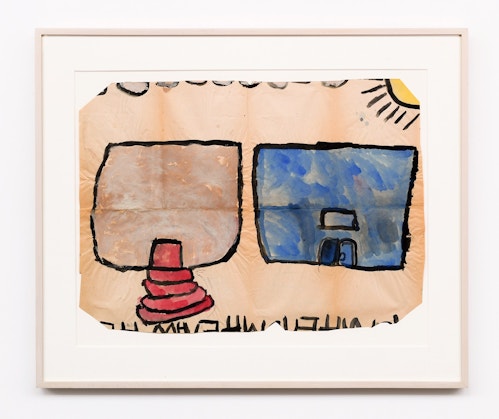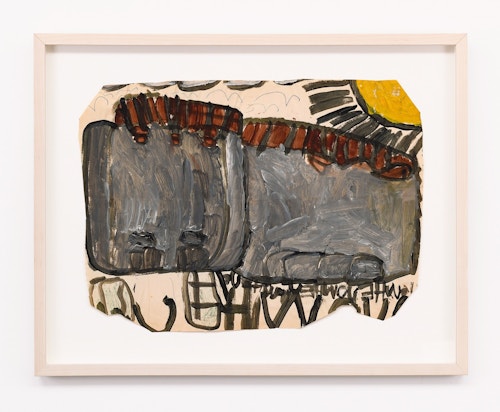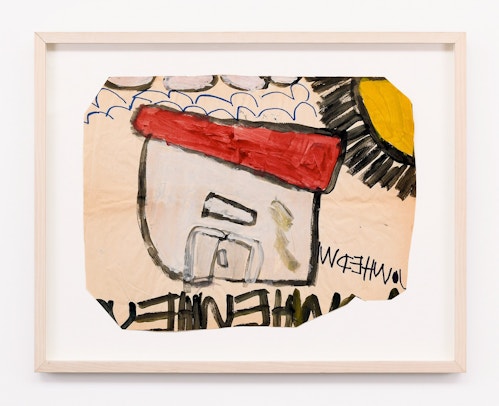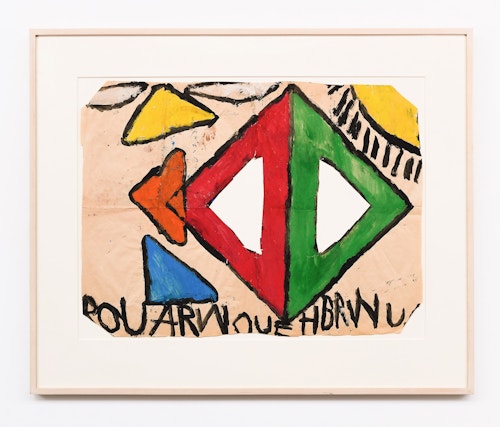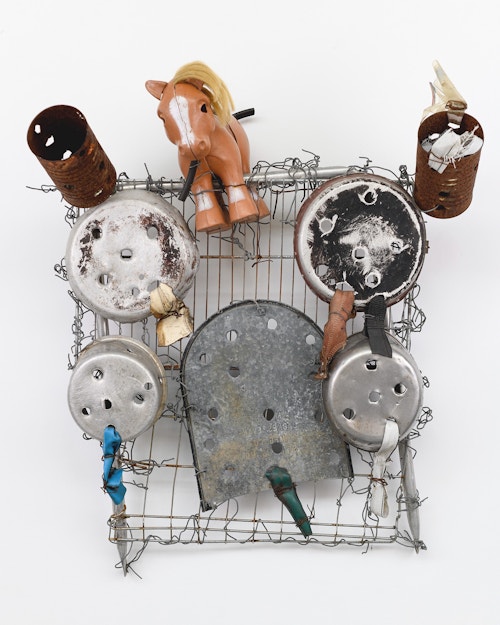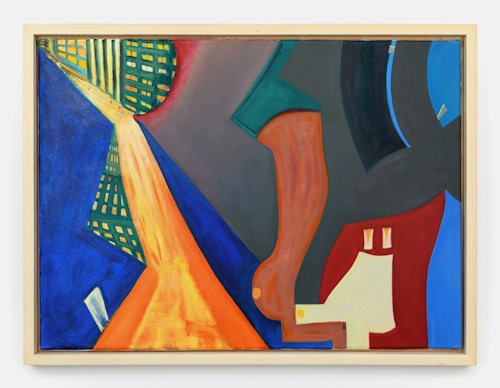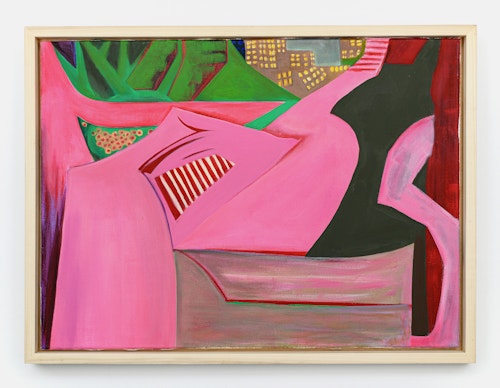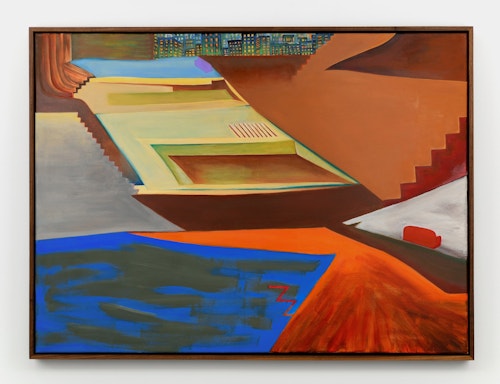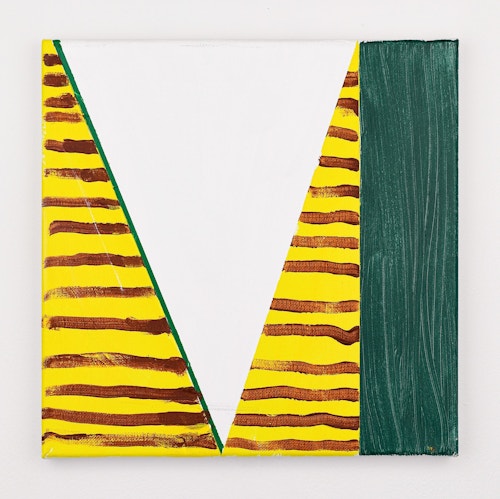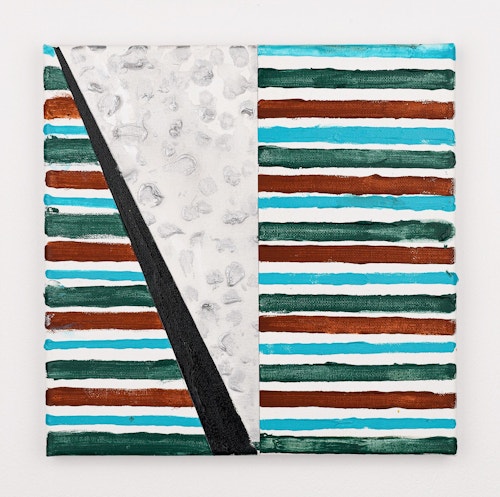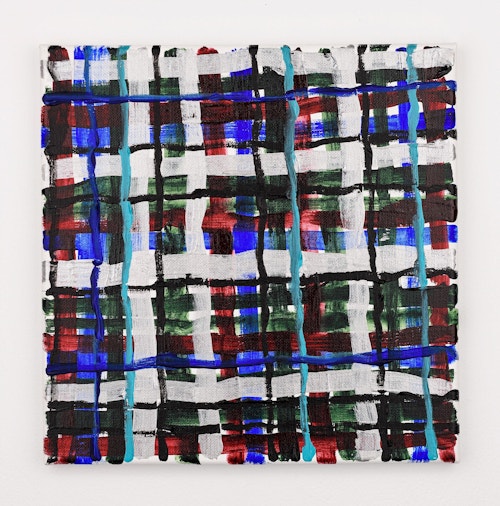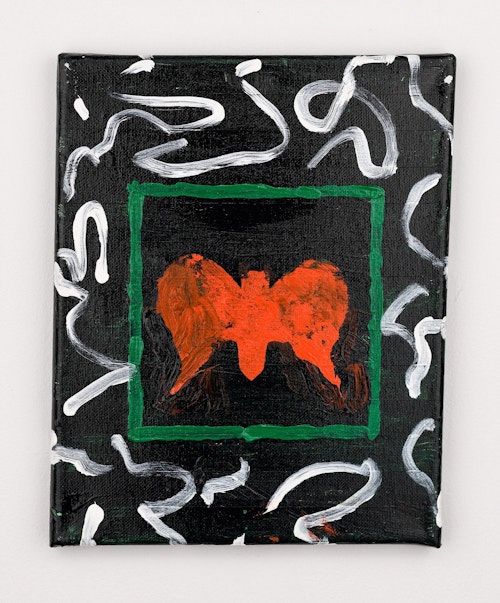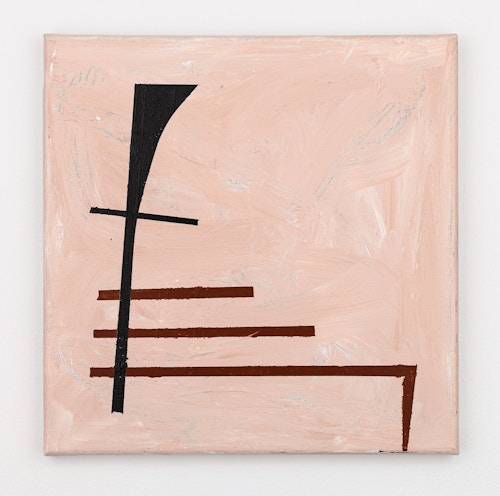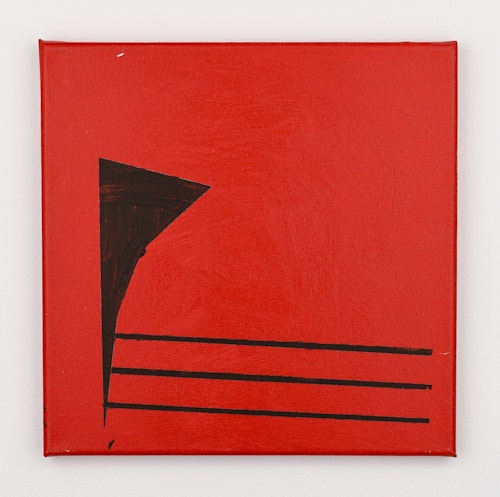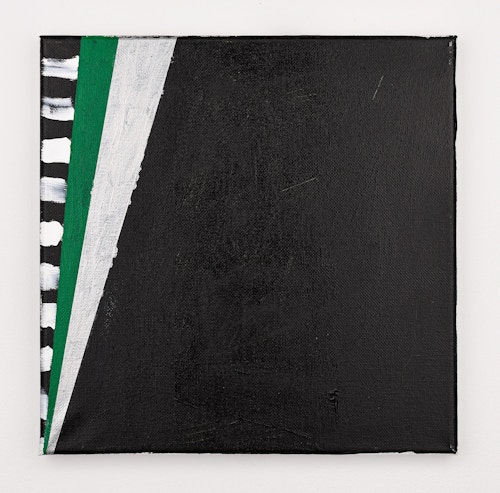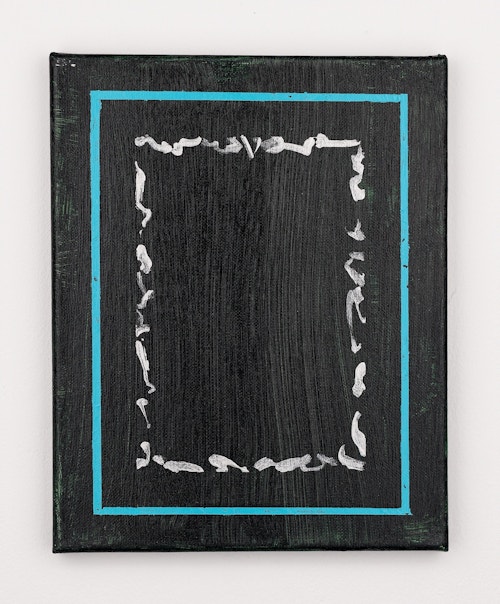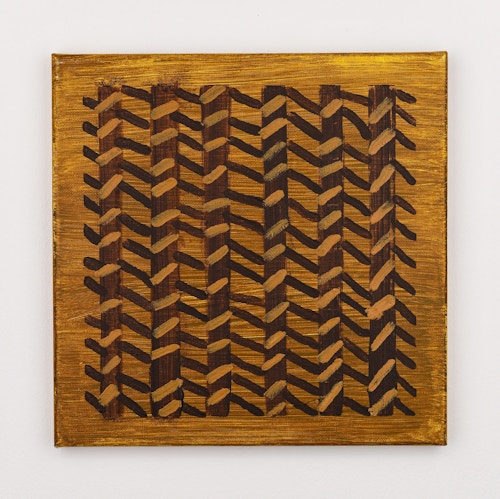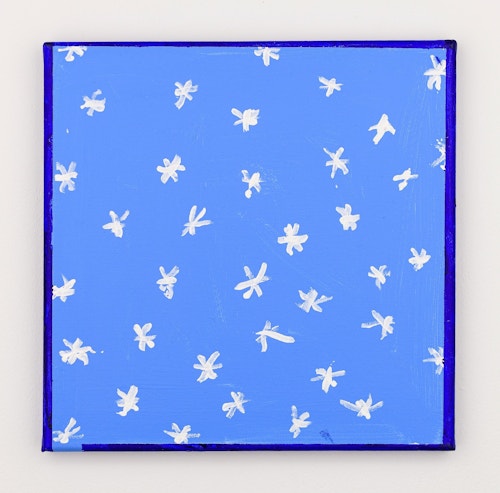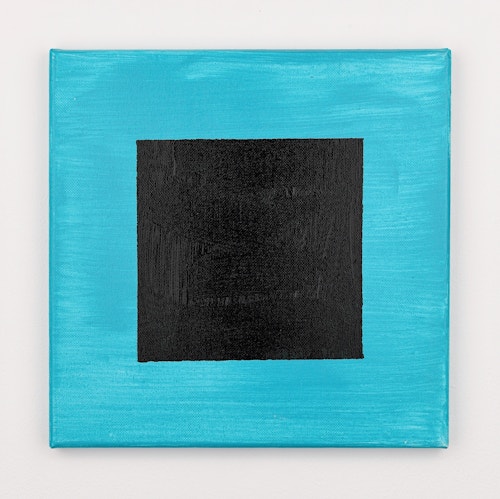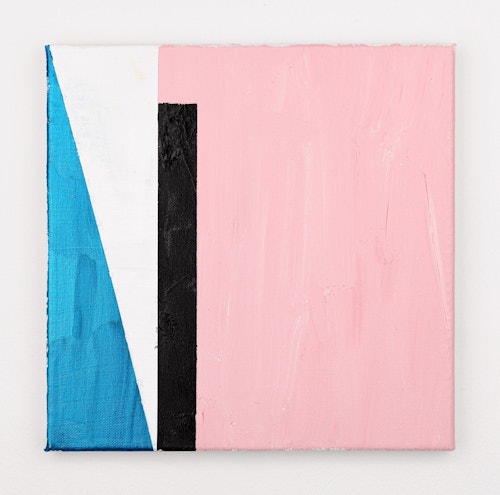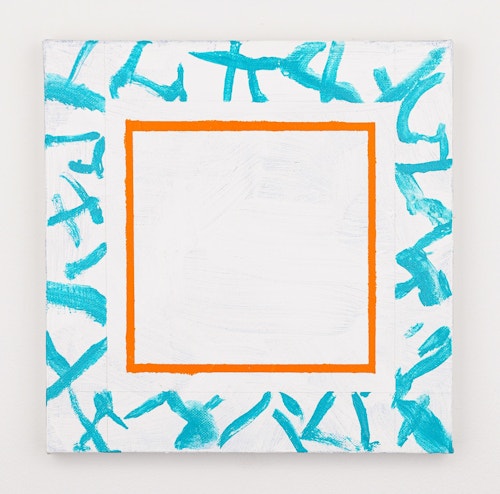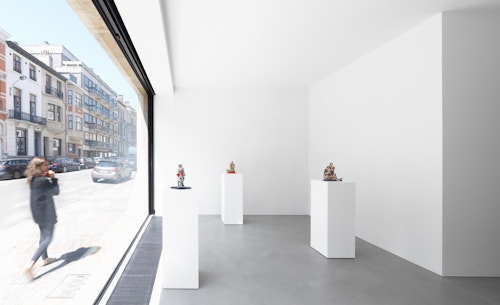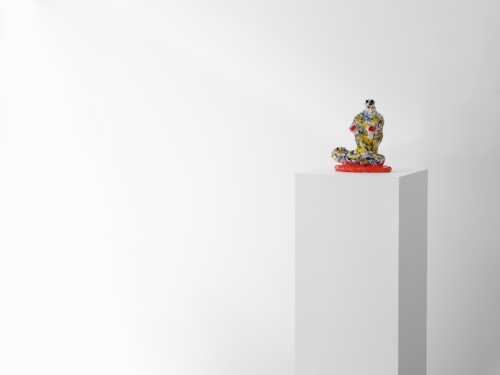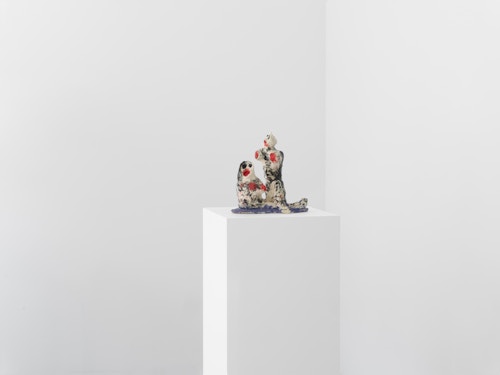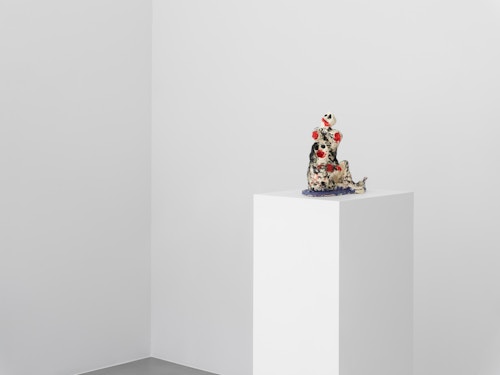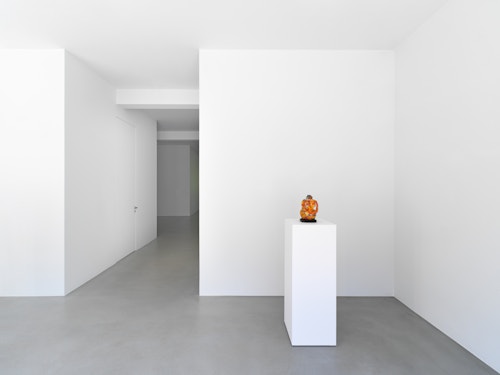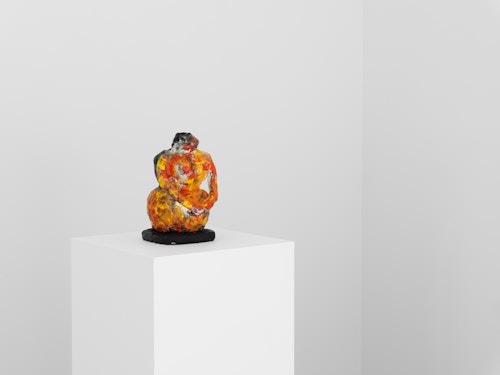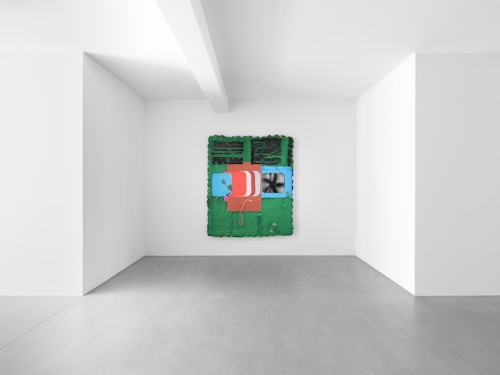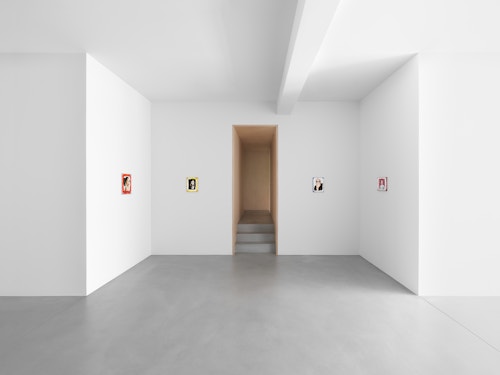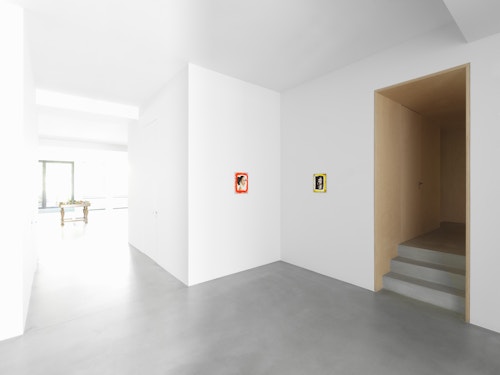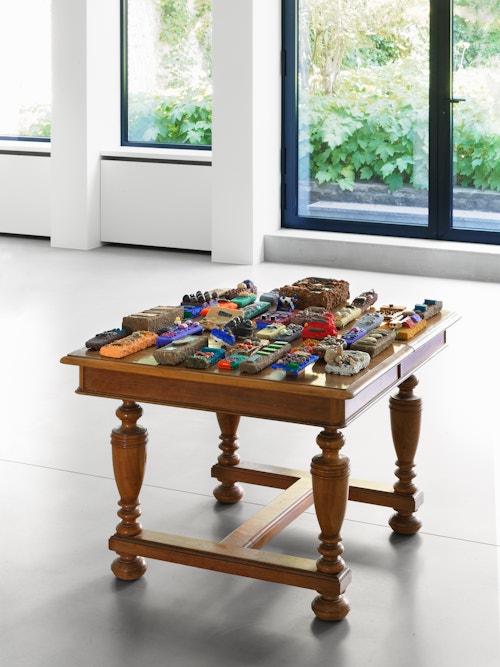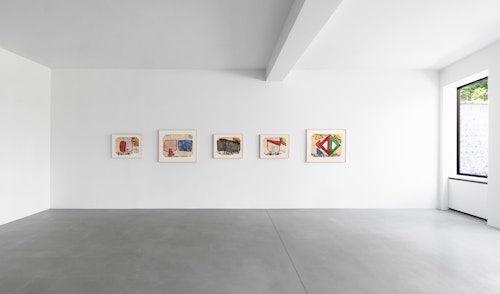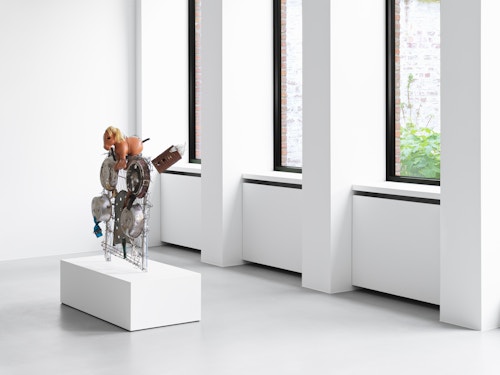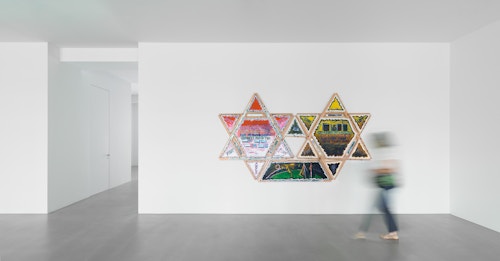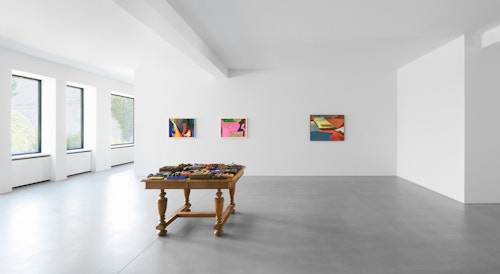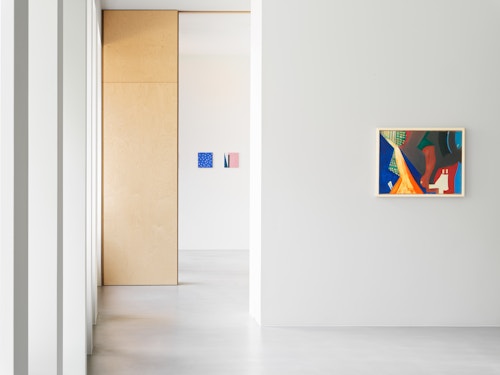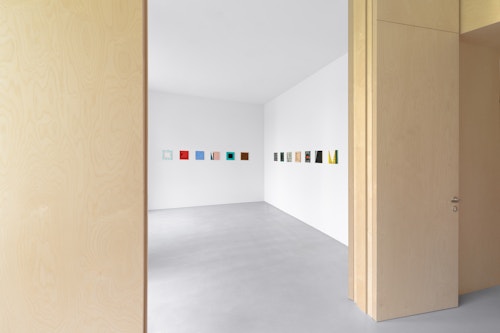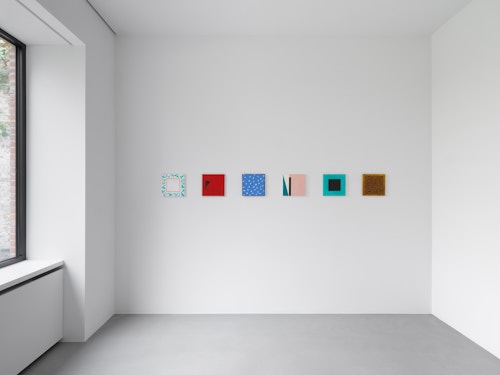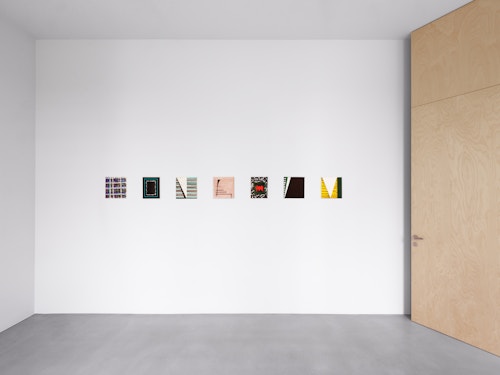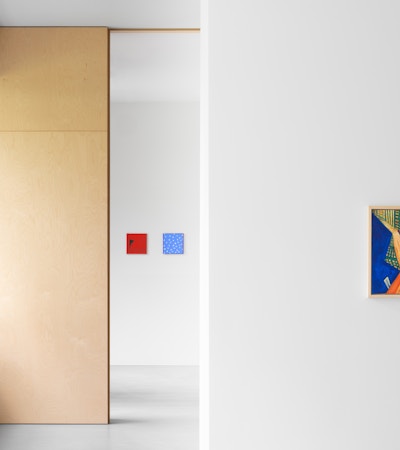
Group exhibition Harry Irene
Harry Irene is a multigenerational group show curated by gallery artist Joe Bradley. It brings the work of seven American artists to Brussels for the first time and includes paintings, collages, ceramics and sculptures. Not uncoincidentally, the exhibition is named after a Captain Beefheart song. Don Van Vliet (aka Captain Beefheart) is both an artist and musician, as are Ed Askew, Brian Belott and Annie Pearlman. The crossover between music and art is just one of the connecting themes in Harry Irene. Pure artistic expression is another: Hawkins Bolden, who was blind, made his sculptures without any reference to artistic trends or a potential audience. Laura Craig McNellis, who has nonverbal autism, has been painting since childhood to describe her observations. They hail, respectively, from Memphis and Nashville. Alice Mackler, now 92 years old, spent decades working on her art in private before being discovered in the late 1990s. Mixed-media techniques, unconventional materials and found objects are yet other connecting threads: Mackler typically builds her sculptures from tiny pats of clay and paints on pictures from fashion magazines; Cloud, Belott and Bolden all utilise found objects and accumulative techniques; McNellis paints on newsprint paper. In this vibrant, energetic, and multidisciplinary show, Bradley presents the work of outsiders and art world mavericks who, to paraphrase Mackler, “just do what they want to do”.
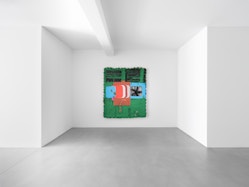
Ed Askew (b. 1940, Stamford, Connecticut; lives and works in New York) is primarily known for his music but has painted all his life. Prior to his musical breakthrough at the age of 23 in 1968 (Ask the Unicorn from that year is widely considered to be a masterpiece of the psychedelic-folk genre), he completed seven years of fine art training, first at the Silvermine Arts Center in Connecticut and later at Yale (1963-66). He says: “My work as a painter has always been tied to Modernism. I read everything I could find related to art, from Cézanne through the 1950s. The issue of innovation never interested me personally... What interests me is all the stuff that goes into abstract and abstract-figurative art. Not the styles, but the stuff that, in various combinations, make the styles: mixing and matching painting methods and ideas.” Askew has released nine albums since his debut in 1968 and self-released many more online. His last album For the World (2013) is the culmination of his music.
Brian Belott (b. 1973, East Orange, New Jersey; lives and works in New York) is another artist-musician. His eclectic practice spans sculpture, painting, bookmaking, audio work and performance. Belott’s overflowing studio—he is a compulsive collector—functions like a giant creative laboratory in which he explores the aesthetic and semi-absurd effects of amalgamating contradictory materials. His Puuuuuuuuuuffs series (1996-ongoing), or ‘puff pieces’ (the term means an article or story in the media that is excessively complimentary about a person, product, event, etc.), are typical of his humorous and improvisatory practice. These hybrid works—which combines painting, collage and sculpture—often feature cut-out recesses containing obsolete items or junk. The work in Harry Irene contains a plastic fan, for example. Defunct calculators and remote controls are another recurrent theme, here iterated as a profusion of roughly modelled and brightly painted sculptures. Belott disregards all rules and norms in his work, saying: “I have two impulses constantly at play: one is the formalist who wants to make elegant things, and the other is the absurdist who wants to destroy them.”
Hawkins Bolden (1914–2005, Memphis, Tennessee), who suffered a head injury and went blind at the age of eight, is known for his ‘scarecrow’ assemblages made from pots, pans, leather belts, rubber hoses and other found materials. As a young man, he quickly learned to make improvised radios out of wires and crystals. He then progressed to making sculptures from the detritus of urban life, placing them like totems outside his house. Smaller works were intended for the wall. Bolden said: “I started making faces and things out of stuff I found, probably about 1965. One of my nieces said, ‘put them in your garden to keep the birds out.’ So I guess you can call them things scarecrows.” He was a compulsive collector who was also given items by local residents. His modus operandi was to throw everything into a crawl space under his house and, using touch alone, pluck items from the heap when he wanted to work. He would then hammer, cut, twist and bend his materials into sculptures. Bolden participated in the exhibition Passionate Visions of the American South at the New Orleans Museum of Art in 1997.
Mike Cloud (b. 1974, Chicago, Illinois; lives and works in Chicago) constructs his own stretcher frames from wooden battens, often broken, that he nails together into different shapes. He staples his expressive, colourful and heavily painted canvases within these structures, often adding found objects or text fragments. Cloud’s paintings-cum-sculptures are filled with multiple layers of meaning. Shopping List Greener Pastures (2020) takes the form of two adjacent hexagrams. This ancient and mystical symbol, comprising two overlapping equilateral triangles, is common to many cultures. Also known as the Star of David, it is the international symbol of Judaism and Jewish identity. When broken down into its constituent parts, Shopping List Greener Pastures is pure geometry: a composition of five large and thirteen small triangles plus a parallelogram. The latter canvas contains two additional triangles in the form of pyramids, with a sun and palm trees. An idyllic scene or a reference to the ‘Pyramids and Palm Trees’ test, a key diagnostic tool for assessing how well people can access meaning from pictures? A hexagram and a pyramid are also the emblems of two rival Chicago gangs (Gangster Disciples and Almighty Black P. Stones respectively). The painted words in the work, which read like a shopping list, are also oppositional: left vs. right, blue vs. blackberries, green vs. black tea, etc. Cloud has said: “My practice, which encompasses an expanded field of painting and image making, dissects photographic and painterly form, scrambling text and re-aligning content in a way that produces new breaks in legibility and new understandings. My work combines an analytic approach with my interest in the conditions of history and the broader social sphere.”
Alice Mackler (b. 1931, New York; lives and works in New York) had been making art for over seven decades before gaining recognition for her ceramics at the turn of the millennium. She trained at the Art Students League in the 1950s and obtained her B.F.A. from the School of Visual Arts, both in New York, in 1988. For the majority of her life, Mackler was an office manager who painted in her spare time. She started making the brightly-glazed, finger-tip modelled female figures—for which she is now well- known—after taking up ceramics in 1999. Executed in a variety of poses and with a myriad facial expressions, their naïve appearance belies their technical complexity. After decades of studio practice, Mackler is uniquely attuned to her material and a skilled colourist. Her work is wholly personal and made without any reference to aesthetic trends and norms. When asked if she ever felt the need to rebel against her art school training in order to find her own voice, Mackler famously replied: “No. Because I do what I want to do.” She also creates collages from the pages of fashion magazines, which she paints with energetic marks in the same bright colours as her ceramics.
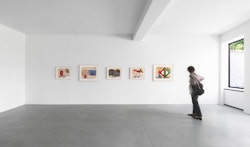
Laura Craig McNellis (b. 1957, Nashville, Tennessee; lives and works in Nashville) depicts her day-to-day life — buildings, interiors, objects and events — in simple, bold and colourful scenes. She is nonverbal autistic and can only be understood by her immediate family. McNellis has been painting since childhood, always on large sheets of newsprint paper. Her late father introduced her to this type of paper: it was cheap, plentiful and allowed her to paint as much as she liked. She has used it ever since. McNellis always folds each sheet for storage, typically clips the four corners (creating a format that resembles old photographs in a vintage album) and generally includes a bright yellow sun in the top right corner of each painting. Many of McNellis’ works depict rooms and objects in her family home. Her practice is essentially process-oriented: the act of making an image is all that matters. Words or letters often run along the bottom of her paintings but, as McNellis is non-literate, they do not mean anything specific. What they do allude to, however, is her visual appreciation of lettering and her grasp of its communicative function.
Annie Pearlman (b. 1982, Johnson, Vermont; lives and works in New York) is a composer and visual artist. She is also the co-founder of Groove Garden, an independent music supervision and licensing company based in New York and Chicago. Pearlman’s paintings fuse abstracted elements from interior and exterior spaces—road markings, illuminated high-rise buildings, trees, steps, greenery and pathways—with areas of pure colour. Her works are influenced by cinematography (Pearlman studied film as an undergraduate) and often contain multiple viewpoints. Such perspectives are akin to classic camera angles such as eye-level shot, high-angle shot, aerial shot, ground- level shot, etc. Pearlman’s paintings are evocative of atmospheres and contrasts—between the urban landscape and nature for example—rather than specific places. They also reflect the visual cacophony that is New York and the idea of the metropolis being in constant motion, more a feeling than a place that can be pinned down.
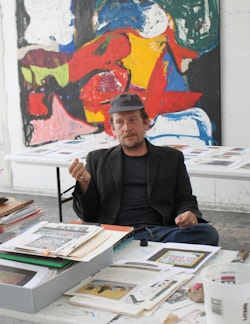
Joe Bradley (b. 1975, Kittery, Maine; lives and works in New York) is an artist and has curated several exhibitions. In 2018, he co-curated a collection display for the Rose Art Museum in Massachusetts and a group show entitled Mixed Bag for the Greenpoint Gallery in New York. Most recently, he was a contributing curator (and participant) in The Drawing Centre Show at Le Consortium in Dijon (2022-23).
